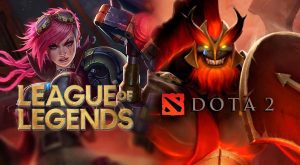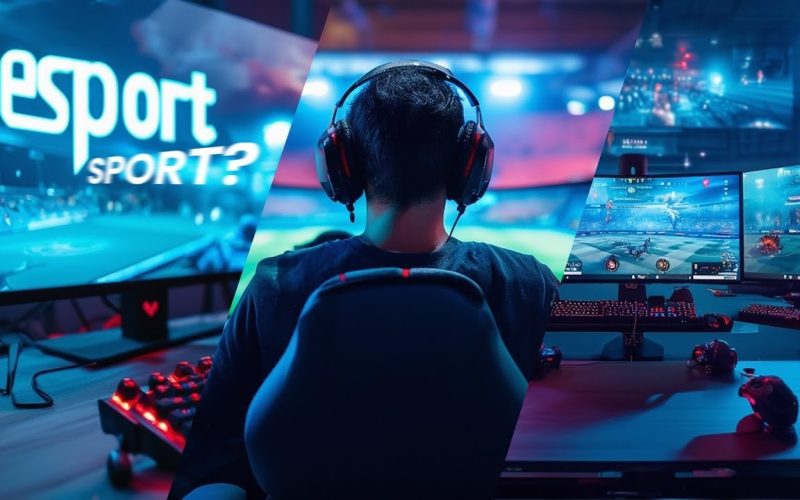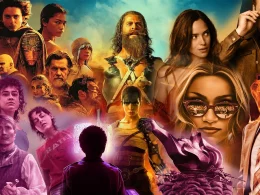Introduction
Esports has become a huge global trend in recent years, changing how we think about sports. It’s now a major part of the entertainment and sports industries, with millions of fans and players around the world. Esports, or electronic sports, is all about competitive video gaming at a professional level. What started as a small hobby has grown into a powerful force in the sports world. This article looks at how esports is affecting traditional sports, comparing the two, and examining how sports entertainment is changing.
The Evolution of Esports

Esports started as a fun activity, with players competing in small local events called LAN parties in the 1990s. Over time, it has grown into a multi-billion-dollar industry with professional leagues, big sponsors, broadcasting deals, and a growing number of fans. Popular games like League of Legends, Dota 2, and Counter-Strike have become internationally known, with millions of viewers watching on platforms like Twitch and YouTube.
Esports has also created new types of competitions, with huge tournaments held in arenas and streamed worldwide. Players now compete for money, sponsorships, and fame, similar to traditional athletes. This growth has raised questions about how esports is affecting traditional sports, which have been popular around the world for a long time.
How Esports Is Reshaping the Sports Landscape

Similarities Between Esports and Traditional Sports

Key Differences Between Esports and Traditional Sports

Even though esports and traditional sports are different, they have a lot in common:
- Competition: Both esports and traditional sports are all about competing. They require skill, strategy, and teamwork.
- Fan Engagement: Both have huge fan bases. Fans can enjoy live events, buy merchandise, and connect with teams or players through digital platforms.
- Sponsorship and Marketing: Big brands sponsor both esports and traditional sports to reach younger, tech-savvy audiences.
- Training: Traditional sports need physical fitness, while esports require mental sharpness, hand-eye coordination, and lots of practice. Many professional gamers train just like traditional athletes.
These similarities show that, even though they’re different, esports and traditional sports both appeal to competitive people and entertainment-loving fans.
The Impact of Esports on Traditional Sports

Esports has made traditional sports organizations rethink how they do things. The younger fans who are drawn to esports are a challenge for traditional sports, which have usually had older, loyal fan bases. To keep up, traditional sports have started adding esports to their brands, using digital platforms more, and changing how they market themselves.
The growth of esports has also led to events where athletes from traditional sports join in esports competitions. For example, NFL and NBA players have taken part in charity gaming tournaments, helping connect the two worlds of sports and esports.
Esports as a Growing Industry

Esports has grown from a small hobby into a big business. Big companies are investing in it, and there are now professional teams and players competing at the highest level. Major tournaments like the League of Legends World Championship and the International Dota 2 Championship offer millions of dollars in prizes. These events are streamed online and watched by millions of people around the world. With so much money and attention, esports is becoming an important part of the entertainment world, and it’s only growing bigger.
Esports as a Career Choice

In the past, the main way to have a career in sports was to become a professional athlete in traditional sports. Now, esports offers a similar chance for people who are good at video games. Professional gamers can make money through sponsorships, tournament prizes, and streaming. Some even create their own brands around gaming, becoming influencers or content creators. This gives young people new career options, especially those who may not be able to compete in physical sports but are great at digital ones.
Challenges and Opportunities for Traditional Sports
The rise of esports brings both challenges and opportunities for traditional sports. Traditional sports need to find ways to keep younger fans, who are more interested in the digital and interactive experiences that esports offer. To keep up, traditional sports organizations are using technology in their events, like livestreaming games, offering virtual reality experiences, and connecting with fans on social media.
At the same time, eSports gives traditional sports a chance to reach younger audiences. By creating esports leagues or teaming up with gaming companies, traditional sports can enter the growing esports market and find new ways to make money.
The Future of Esports and Traditional Sports

As esports continues to grow, the lines between digital and traditional sports are likely to blur even further. Many experts believe the future of sports entertainment will be a mix of esports and traditional sports, where both work together instead of competing for fans. Traditional sports might include esports features, like virtual competitions, while esports could have more live events to help them gain respect as real sports.
Competitive Analysis: Esports vs. Traditional Sports
To better understand the differences between esports and traditional sports, here’s a comparison of key elements:
| Aspect | Esports | Traditional Sports |
|---|---|---|
| Physicality | Minimal physical exertion, focused on mental agility | High physical demands and endurance |
| Accessibility | Easily accessible from home or digital platforms | Requires access to physical venues, equipment, and teams |
| Demographics | Primarily younger (16-35 years old) | Broad audience, varies by sport |
| Monetization | Streaming, sponsorships, in-game purchases | Ticket sales, broadcasting, merchandise |
| Event Format | Online and live-streamed competitions | Live physical events, televised broadcasts |
| Global Reach | Primarily digital, global fan base | Established fan base with regional preferences |
This table highlights the unique characteristics of each sector while showing the areas where they overlap and compete.
Conclusion: A New Era of Sports Entertainment
Esports has already made a significant impact on the sports world, both challenging traditional models and offering new opportunities for growth. While there are distinct differences between esports and traditional sports, both industries share a common passion for competition and entertainment. The future holds exciting possibilities as esports and traditional sports continue to influence and shape each other. As the two worlds merge, fans and players alike will experience an evolving landscape of sports entertainment that offers something for everyone.












